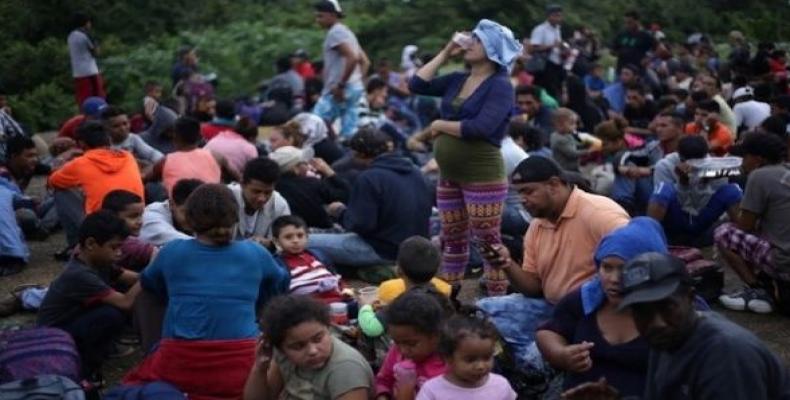Mexico City, January 20 (RHC)-- Thousands of Central Americans gathered Sunday at the border between Guatemala and Mexico, with the aim of crossing into Mexican territory on Monday.
The migrants gathered at the Tecun Uman camp in Guatemala have decided to regroup after small groups managed to cross the border into Ciudad Hidalgo in Mexico on Saturday. According to Guatemala's National Institute of Migration, it is estimated that 821 Hondurans, 19 Salvadorans, three Nicaraguans, and 38 Guatemalans, making a total of 881 people, made it through the Mexican border on Saturday.
It was also revealed that the border was crossed on Saturday by the highest number of people registered to date since the migrant caravan began to increase last Wednesday. The migrants still in Tecun Uman have decided to wait for more travelers to arrive with the hope of having a better chance of advancing in a caravan.
Meanwhile, thousands of migrants are gathered in a camp by UNHCR in front of the Casa del Migrante. It is estimated that 3,500 people could be part of the caravan that plans to cross the border to Mexico on Monday to continue on to the United States.
"We have been getting organized," said Jose Luis Cruz, a 33-year-old Honduran autoworker who left behind his wife and two children in an attempt to reach the United States. Cruz said migrants waiting at Tecun Uman wanted to try to enter Mexico en masse around 5:00 a.m. local time on Monday, hoping authorities would let them through to avoid a confrontation.
"If we cross alone, they will catch us and all the sacrifices we have made to get here will have been in vain," he added. So far, Mexican authorities have controlled the border more successfully than at the end of 2018, offering migrants work in the south.
However, the Mexican Interior Ministry said, that those who do not accept to stay in the south will not receive safe-conduct passes to the United States.
For his part, U.S. President Donald Trump has threatened to sanction Mexico and Central American countries economically if they allow large numbers of people to reach the U.S. border.


